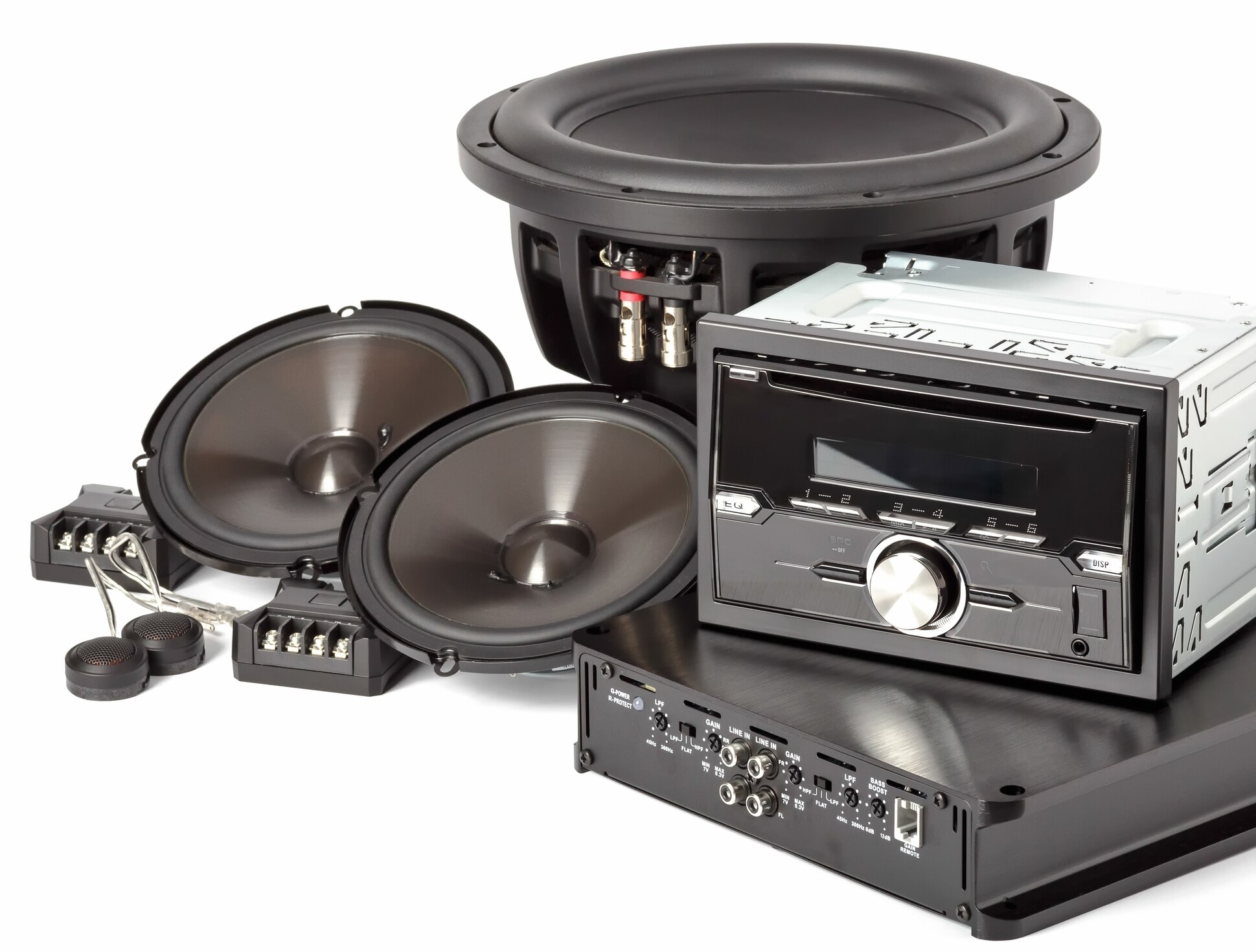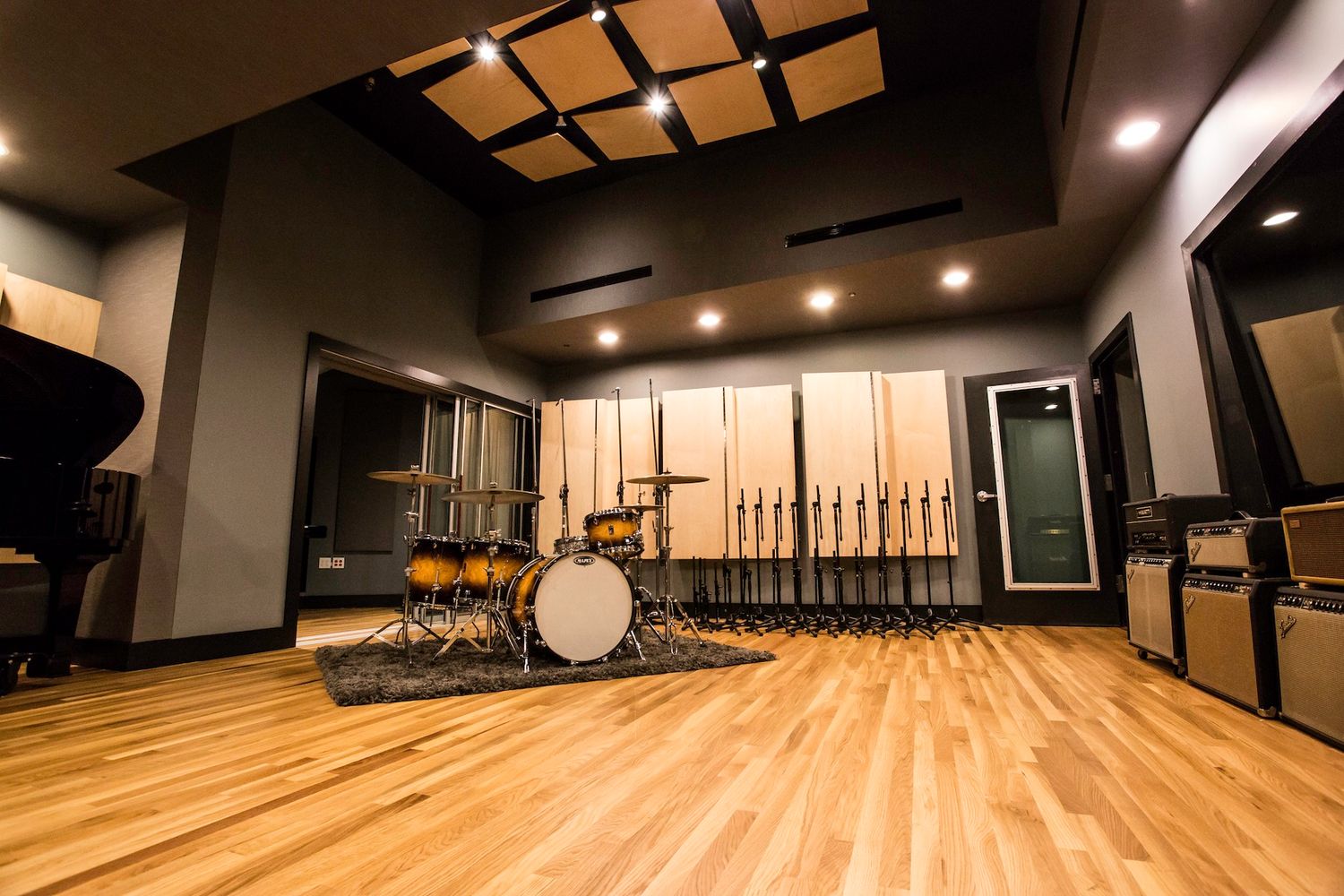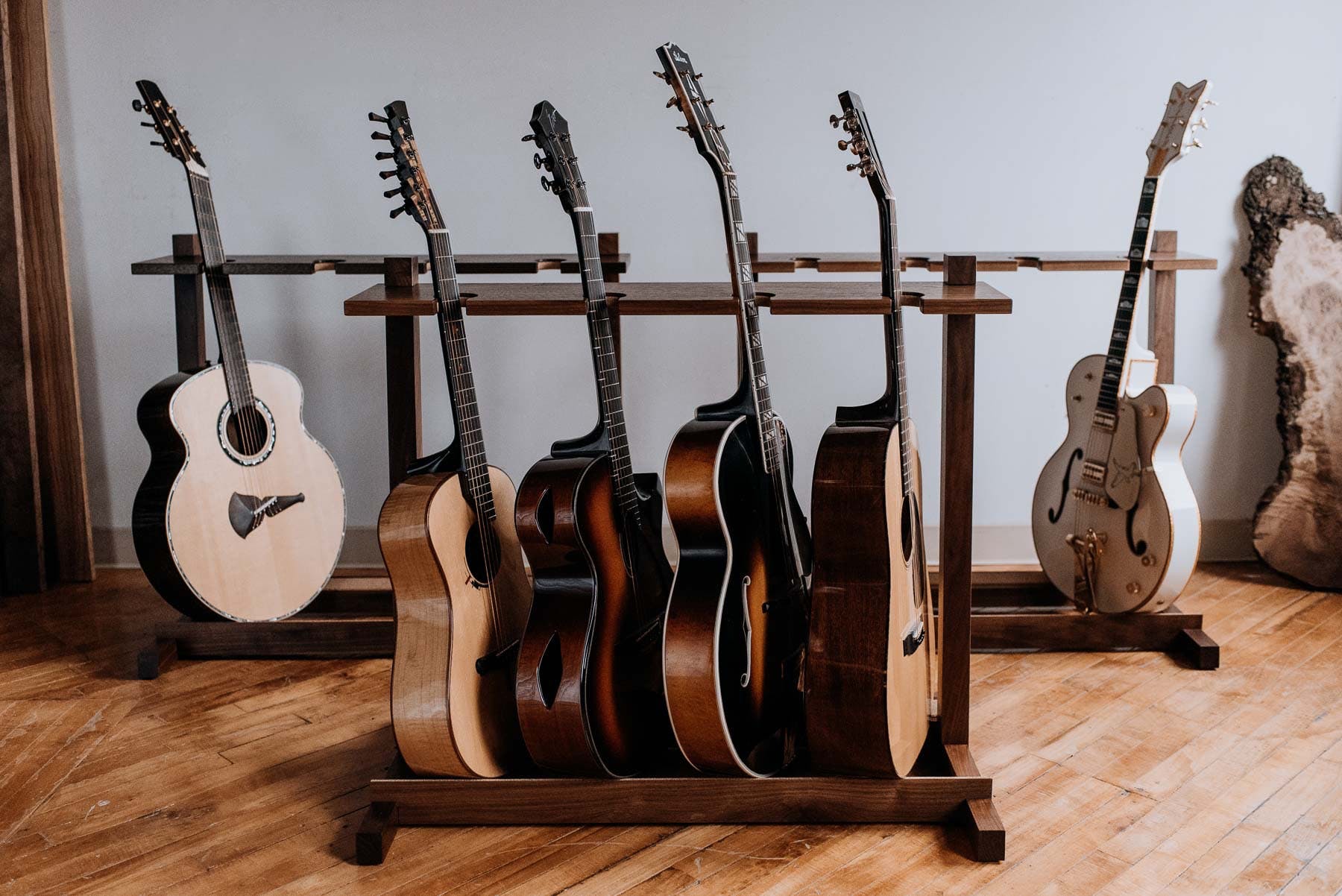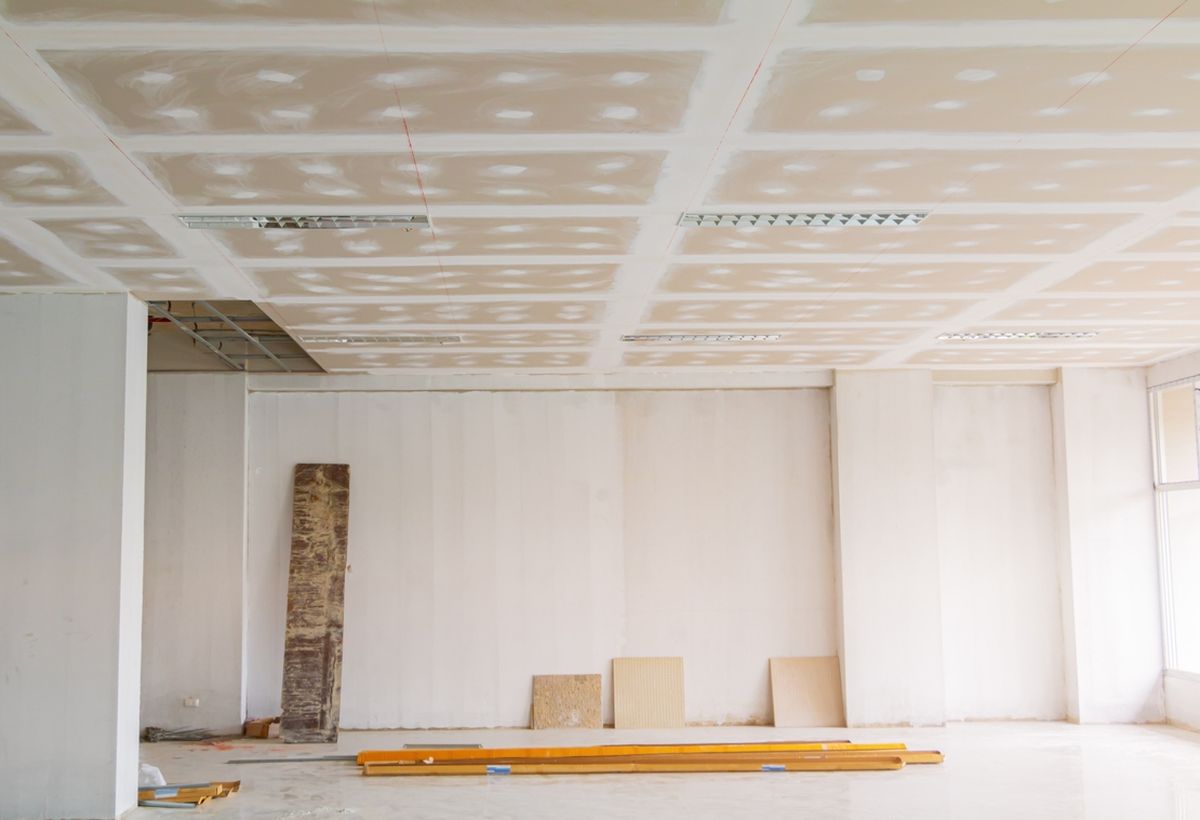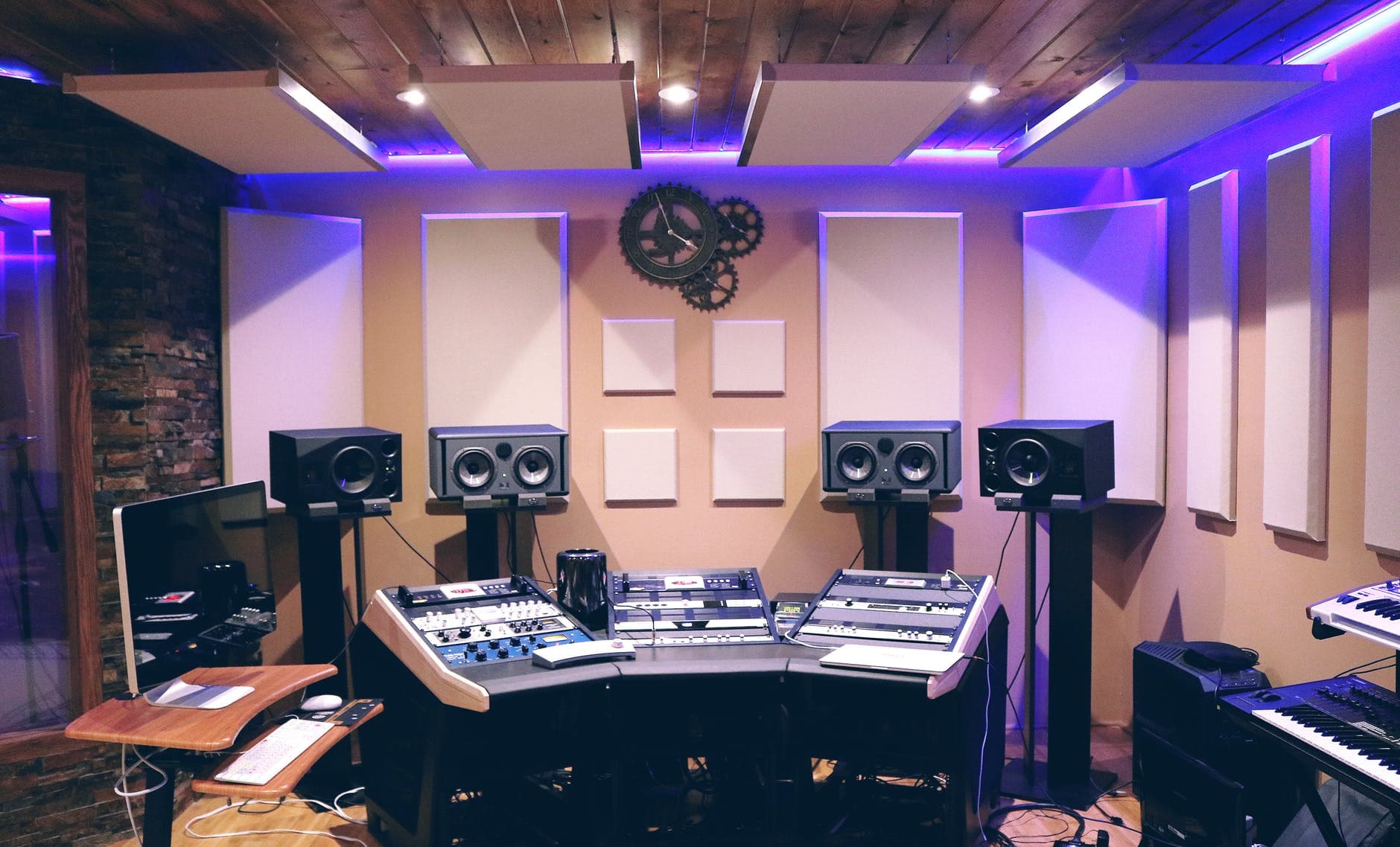Home>Production & Technology>Soundproofing>How To Do Cheap Soundproofing
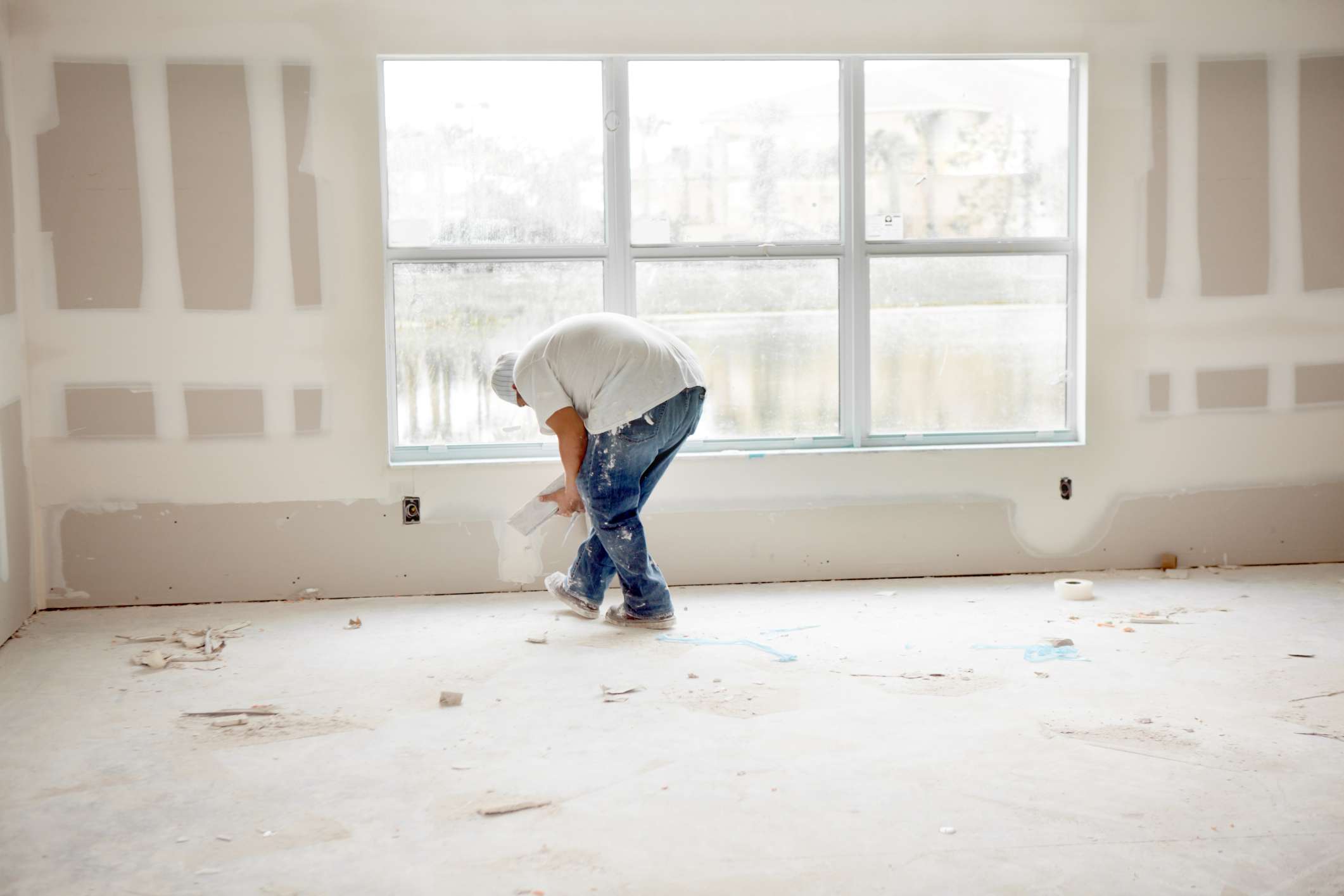

Soundproofing
How To Do Cheap Soundproofing
Modified: March 11, 2024
Learn how to achieve effective and affordable soundproofing solutions with our comprehensive guide. Enhance your environment and minimize noise disruptions with our soundproofing techniques.
(Many of the links in this article redirect to a specific reviewed product. Your purchase of these products through affiliate links helps to generate commission for AudioLover.com, at no extra cost. Learn more)
Table of Contents
Introduction
Welcome to the world of soundproofing! Whether you’re a light sleeper looking for some peace and quiet, a musician trying to isolate your practice space, or someone hoping to reduce outside noise in your home or office, soundproofing can significantly improve your quality of life. In this article, we will explore the ins and outs of soundproofing and provide you with valuable tips to achieve effective soundproofing on a budget.
Soundproofing is the process of reducing or eliminating unwanted noises, whether they are coming from external sources or within a space. It involves creating barriers and taking measures to minimize the transmission of sound waves, providing a more peaceful environment.
Before diving into the various soundproofing techniques, it’s essential to understand that complete sound elimination is virtually impossible. However, with the right strategies, you can significantly reduce the impact of noise, creating a more serene and tranquil space.
One of the key factors in successful soundproofing is evaluating your specific needs. Are you looking to reduce noise from a busy street, loud neighbors, or a rowdy room next door? Identifying the source and level of noise will help determine which soundproofing solutions are most effective for your situation.
Additionally, considering your budget is crucial. Soundproofing projects can range from simple, inexpensive measures to more extensive renovations, and understanding what you can afford will help guide your choices. Fortunately, there are several budget-friendly options available that can significantly improve sound insulation without breaking the bank.
In the following sections, we will explore these budget-friendly soundproofing options in more detail, as well as provide helpful tips and techniques for effective soundproofing. Whether you’re a seasoned DIY enthusiast or someone venturing into the world of soundproofing for the first time, this article will equip you with the knowledge and tools to create a quieter environment.
Understanding Soundproofing
Before we delve into the world of soundproofing techniques, it’s important to have a basic understanding of how sound travels and the principles behind soundproofing.
Sound is a form of energy that travels in waves through different mediums, such as air, water, and solids. When a sound is produced, it creates vibrations that travel through the air and reach our ears, allowing us to hear the noise. However, these sound waves can also travel through walls, floors, and ceilings, which is why unwanted noise can seep into our living or working spaces.
Soundproofing aims to reduce or block the transmission of sound waves, minimizing the impact of external noise or containing sound within a particular area. To achieve effective soundproofing, there are two primary methods: sound absorption and sound insulation.
Sound absorption involves the use of materials that absorb sound waves and reduce their reflection. This helps to minimize echo and reverberation within a room, enhancing the acoustics and making the space quieter. Common sound-absorbing materials include acoustic foam panels, fiberglass insulation, and natural fibers like cork and wool.
On the other hand, sound insulation focuses on creating barriers to prevent sound from entering or leaving a space. This involves using dense materials that block or absorb the sound vibrations, such as mass-loaded vinyl (MLV), soundproof curtains, and double-pane windows with acoustic glass.
Combining sound absorption and sound insulation techniques can result in a more effective soundproofing solution, ensuring that both the internal and external noise sources are adequately addressed.
It is important to note that soundproofing is not a one-size-fits-all solution. The effectiveness of your soundproofing efforts will depend on a variety of factors, including the type and thickness of materials used, the construction of your space, and the frequency and intensity of the noise you are trying to mitigate.
Furthermore, it is important to set realistic expectations when it comes to soundproofing. While it is possible to significantly reduce noise levels, achieving complete silence may not be achievable in all cases. However, with proper techniques and materials, you can create a much quieter and more comfortable environment.
Now that we have a better understanding of soundproofing principles, let’s explore some budget-friendly options and techniques to help you achieve effective soundproofing in your space.
Evaluating Your Soundproofing Needs
Before embarking on a soundproofing project, it’s essential to evaluate your specific soundproofing needs. Understanding the source and level of noise will help determine the most effective solutions for your situation.
Start by identifying the primary sources of noise in your space. Is it external noise from traffic, neighbors, or construction? Or is it internal noise from appliances, music, or footsteps? Pinpointing the sources will help you address the specific areas that require soundproofing.
Once you have identified the noise sources, assess the level of noise you are dealing with. Is it a constant low-level noise or occasional bursts of high-decibel sounds? This will help determine the level of soundproofing required to achieve your desired results.
Next, consider the type of space you are working with. Different areas may have different soundproofing needs. For instance, if you are soundproofing a bedroom, your primary objective may be to reduce external noise and create a quieter sleeping environment. On the other hand, if you are soundproofing a music studio, your goal may be to contain sound within the room and minimize noise leakage to adjacent areas.
In addition to identifying the noise sources, levels, and space type, it’s essential to consider any legal or building regulations that may apply. Some areas have specific requirements for acceptable noise levels, especially in commercial or multi-unit residential buildings. Ensure that your soundproofing measures comply with any regulations to avoid potential issues down the line.
Lastly, consider your budget. Soundproofing projects can range from simple and inexpensive to more complex and costly. Determine how much you are willing to invest in your soundproofing project and prioritize the areas that require the most attention. Keep in mind that even small, budget-friendly measures can make a noticeable difference in reducing noise levels.
By carefully evaluating your specific soundproofing needs, you can create a targeted approach to addressing the noise issues in your space. This will guide you in choosing the appropriate soundproofing techniques and materials, ensuring that your efforts yield the desired results.
Budget-Friendly Soundproofing Options
Soundproofing doesn’t have to be an expensive endeavor. There are several cost-effective options available that can significantly improve sound insulation in your space. Here are some budget-friendly soundproofing solutions to consider:
- Weatherstripping: Install weatherstripping around doors and windows to create a tight seal. This not only helps with energy efficiency but also helps block out external noise.
- Draft stoppers: Use door draft stoppers or draft snakes to seal gaps at the bottom of doors. This can prevent noise from entering or leaving a room, especially in areas where soundproofing doors may be too costly.
- Rugs and carpets: Adding area rugs or wall-to-wall carpets can help absorb sound and reduce echo in a room. Opt for thicker, heavier rugs or carpets to improve sound insulation further.
- Curtains: Hang heavy, sound-absorbing curtains to block out external noise and reduce sound reflections within a room. Look for curtains with a dense fabric or consider adding a layer of soundproofing material behind them.
- Furniture placement: Strategically position furniture, such as bookcases, sofas, and cabinets, against walls to help absorb sound and reduce its transmission to adjacent rooms. Remember, the heavier and denser the furniture, the better it will be at blocking sound.
- Acoustic panels: DIY acoustic panels can be an affordable solution to improve sound absorption in a room. These panels can be made using materials like foam, fiberglass, or recycled denim insulation.
- Sealing air gaps: Use caulk or acoustic sealant to seal any gaps, cracks, or holes in walls, ceilings, or floors. Even small openings can allow sound to travel through, so ensuring a tight seal can make a noticeable difference.
- Soundproofing paint: Consider using soundproofing paint, which contains sound-absorbing materials. While it may not be as effective as other methods, it can provide a marginal improvement in sound insulation.
Remember, these budget-friendly options may not completely eliminate noise but can significantly reduce its impact. For more effective soundproofing, especially in areas with high noise levels or specific requirements, it may be worth investing in professional soundproofing solutions or seeking expert advice.
Next, we’ll explore some helpful tips and techniques for achieving effective soundproofing in your space, whether you choose these budget-friendly options or opt for more advanced methods.
Tips for Effective Soundproofing
When it comes to soundproofing, following certain tips and techniques can greatly enhance the effectiveness of your efforts. Here are some valuable tips for achieving effective soundproofing in your space:
- Identify weak points: Conduct a thorough inspection of your space to identify areas where sound may be leaking or penetrating. Look for cracks, gaps, and openings in walls, floors, ceilings, doors, and windows. Addressing these weak points will help improve the overall sound insulation.
- Layer different materials: Combining different soundproofing materials can yield better results. For instance, using a combination of sound-absorbing panels, mass-loaded vinyl, and acoustic foam can provide a more comprehensive soundproofing solution.
- Consider double-glazed windows: If outside noise is a significant issue, consider installing double-glazed windows with acoustic glass. This specialized glass can significantly reduce noise transmission and provide better insulation than standard windows.
- Use soundproof curtains: Invest in heavy, soundproof curtains that have multiple layers of dense fabric. These curtains can effectively block out external noise and reduce sound reflections within the room.
- Seal air leaks: Properly seal any air leaks or gaps around doors, windows, and electrical outlets using weatherstripping, caulk, or acoustic sealant. Remember that even the smallest openings can allow sound to travel through.
- Consider acoustic wallpapers: Acoustic wallpapers, which have sound-absorbing properties, can help reduce noise reflections within a room. They are available in various textures and designs, allowing you to combine soundproofing with aesthetics.
- Use soundproofing underlayments: When installing new flooring, consider using soundproofing underlayments beneath carpets, laminate, or hardwood. These underlayments help reduce impact noise and improve sound insulation.
- Minimize vibrations: Vibrations can amplify noise, so take measures to minimize them. Place rubber pads or isolators under heavy appliances or equipment, and consider using resilient channels or soundproofing mats on walls and ceilings.
- Soundproof doors: Soundproofing doors can be a game-changer in reducing noise transmission. Install door sweeps to seal the gaps at the bottom of doors, use weatherstripping around the door frame, or consider replacing the door with a solid-core door for better sound insulation.
- Consult with professionals: If you are dealing with excessive noise levels or have specific requirements, consulting with soundproofing professionals can be beneficial. They can provide expert advice and suggest customized solutions tailored to your needs.
Remember, implementing a combination of these tips and techniques will yield the most effective soundproofing results. Experiment with different methods and materials to find the right combination for your space and noise reduction goals.
Next, let’s explore some DIY soundproofing techniques that you can easily implement to achieve better sound insulation in your home or workspace.
DIY Soundproofing Techniques
If you’re on a budget or enjoy taking a hands-on approach, there are several DIY soundproofing techniques you can implement to improve sound insulation in your space. Here are some simple and effective DIY soundproofing methods:
- Seal gaps and cracks: Use weatherstripping, caulk, or acoustic sealant to seal any gaps, cracks, or holes in walls, floors, windows, and doors. This will prevent sound from leaking in or out of your space.
- Use door sweeps: Install door sweeps on the bottom of doors to seal the gap and block noise from entering or leaving the room. DIY door sweeps can be made using heavy-duty adhesive and a long strip of weatherstripping material.
- Create DIY acoustic panels: Make your own sound-absorbing panels by wrapping a wooden frame with dense insulation material like fiberglass or rockwool, and covering it with fabric. Hang these panels on walls to minimize sound reflections and improve acoustics.
- Apply soundproofing paint: Use soundproofing paint to coat walls and ceilings. This special paint contains sound-absorbing materials that can help reduce noise reflections in a room. Apply multiple coats for better results.
- Make DIY soundproof curtains: Sew together layers of dense fabric, such as velvet or heavy curtains, to create your own soundproof curtains. Hang these curtains over windows or doorways to block out external noise.
- Use soundproofing blankets: Hang thick soundproofing blankets on walls, doors, or windows to help absorb noise and reduce echo in a room. These blankets can be easily hung using hooks or nails.
- Install bookshelves: Place bookshelves filled with books or other objects against walls to act as sound barriers. The books help to absorb sound and prevent it from bouncing around the room.
- Use furniture strategically: Position heavy furniture, such as cabinets or bookcases, against walls to help absorb sound vibrations. This not only adds a decorative element to the room but also acts as an effective sound barrier.
- Hang acoustic panels: Purchase affordable acoustic foam panels online or from local stores and hang them on walls or ceilings. These panels are designed to absorb sound waves and improve the acoustics of a room.
- Apply carpet underlay: If you have hardwood or laminate flooring, add a layer of carpet underlay beneath area rugs. This helps reduce impact noise and improves sound insulation.
These DIY soundproofing techniques are cost-effective and can significantly enhance the sound insulation in your space. Experiment with different methods and materials to find what works best for your specific needs and budget.
Now that you have a range of DIY techniques at your disposal, let’s dive into using acoustic materials for effective soundproofing.
Using Acoustic Materials
Acoustic materials are specifically designed to absorb and reduce sound, making them valuable tools for soundproofing. When strategically used, these materials can greatly improve the acoustics and reduce noise levels in a room. Here are some common acoustic materials and how to use them effectively:
- Acoustic Foam Panels: Acoustic foam panels are versatile and effective in absorbing sound waves. They are typically made of open-cell polyurethane foam and come in different thicknesses and densities. Place these panels on walls, ceilings, or inside cabinets to reduce echoes and reflections, creating a more controlled sound environment.
- Fiberglass Insulation: Fiberglass insulation is an excellent sound-absorbing material and is commonly used in construction. While it is primarily used for thermal insulation, it also helps to reduce noise transmission. Install fiberglass insulation in walls, ceilings, or floors to minimize sound transfer between rooms.
- Mass-Loaded Vinyl (MLV): MLV is a dense, flexible material that effectively blocks sound transmission. It can be used on walls, floors, ceilings, and even in car interiors. Install MLV as an additional layer under drywall or lay it under carpets to enhance sound insulation.
- Acoustic Panels: Acoustic panels are available in various materials, such as fabric-wrapped fiberglass or perforated wood. These panels are specifically designed to absorb sound and reduce noise reflections within a room. Hang them on walls or suspend them from ceilings to improve the overall sound quality.
- Bass Traps: Bass traps are acoustic devices that target low-frequency sound waves. They are usually made of foam or fiberglass and are placed in corners or near walls to eliminate excessive bass resonance. Bass traps are particularly useful in music studios or home theaters.
- Cork: Cork is a natural material with excellent sound-absorbing properties. It is commonly used as a flooring material, but can also be applied to walls to dampen sound. Cork wall panels can be installed to reduce noise reflections and improve acoustics in a space.
When using acoustic materials, it’s important to understand the specific requirements and limitations of each material. Follow manufacturer instructions for proper installation and placement to maximize their effectiveness in reducing noise transmission.
Additionally, combining different acoustic materials can provide better soundproofing results. For example, using a combination of acoustic foam panels, MLV, and carpets with underlay can create a layered approach to sound insulation.
Remember, the effectiveness of acoustic materials can vary depending on the specific noise issues in your space. Experiment with different techniques and combinations to find the best solution for your soundproofing needs.
In the next sections, we will explore techniques for sealing sound leaks, soundproofing doors and windows, and soundproofing floors and ceilings to further enhance your soundproofing efforts.
Sealing Sound Leaks
One of the key factors in effective soundproofing is sealing any air gaps or openings that may allow sound to leak in or out of a room. Even the smallest gaps can significantly impact the sound insulation of a space. Here are some techniques to help you seal sound leaks:
- Weatherstripping: Use weatherstripping tape or adhesive strips to seal gaps around doors and windows. Apply it along the edges to create a tight seal and prevent sound from infiltrating the room.
- Seal cracks and gaps: Inspect walls, ceilings, and floors for any cracks or gaps that may allow sound to pass through. Use caulk or acoustic sealant to fill these openings and create a seamless barrier against noise.
- Seal electrical outlets and switches: Sound can easily leak through electrical outlets and switches. Install foam gaskets behind outlet covers to seal them tightly against the wall, reducing sound transmission.
- Apply door sweeps: Install door sweeps on the bottom of doors to seal the gap between the door and the floor. This prevents sound from passing through the bottom of the door and helps improve sound insulation.
- Seal gaps around window frames: Use silicone caulk or weatherstripping to seal any gaps or cracks around window frames. This not only helps prevent sound leaks but also improves energy efficiency.
- Check for hidden gaps: Carefully inspect areas where different building materials meet, such as corners, baseboards, and molding. Seal any hidden gaps or cracks using caulk or acoustic sealant to ensure soundproofing effectiveness.
- Use acoustic putty pads: Apply acoustic putty pads behind electrical boxes and light switches to seal gaps around them. This creates an airtight seal and reduces sound leakage through these areas.
- Insulate air vents and ducts: Air vents and ducts can be pathways for sound transmission. Use insulation material specifically designed for HVAC systems to reduce noise traveling through the vents.
- Install soundproofing gaskets: Use soundproofing gaskets around door frames and windows to create a tight seal. These gaskets are made of rubber or foam and effectively block out external noise.
- Consider double-glazing windows: Double-glazed windows with an air gap between the panes provide better insulation against sound. If you have single-pane windows, consider installing secondary glazing or adding window inserts to improve their soundproofing capabilities.
By sealing sound leaks, you can significantly improve the overall soundproofing of a room. Remember to inspect all possible areas where sound may leak and address them systematically to ensure a more effective soundproofing solution.
Now that we’ve covered sealing sound leaks, let’s move on to soundproofing doors and windows, which are often the main culprits for sound transmission in a space.
Soundproofing Doors and Windows
Doors and windows are common entry points for external noise to seep into a room or for sound to escape. Soundproofing these areas is crucial in achieving effective sound insulation. Here are some techniques for soundproofing doors and windows:
Soundproofing Doors:
- Install a door sweep: Attach a door sweep to the bottom of the door to seal the gap between the door and the floor. This prevents sound from traveling through the bottom of the door.
- Use weatherstripping: Apply weatherstripping tape or adhesive strips around the edges of the door to create a tight seal. This blocks gaps and helps reduce sound transmission.
- Replace hollow doors: Hollow-core doors are poor at blocking sound. Consider replacing them with solid-core doors, which are denser and provide better sound insulation.
- Add mass-loaded vinyl (MLV): Attach MLV to the back of the door using adhesive. This dense material helps to block sound vibrations and reduce noise transmission.
- Use acoustic door panels: Install acoustic panels on the surface of the door to absorb sound waves. These panels are available in various designs and can enhance both the visual appeal and soundproofing capabilities of the door.
Soundproofing Windows:
- Use double-glazed windows: Double-glazed windows with an air gap between the panes offer better sound insulation. If you have single-pane windows, consider installing secondary glazing or adding window inserts to improve their soundproofing performance.
- Apply window films: Install window films that are specifically designed for soundproofing. These films adhere to the glass and help reduce noise by adding an extra layer of insulation.
- Seal gaps around window frames: Use silicone caulk or weatherstripping to seal any gaps or cracks around the window frames. This prevents sound from leaking through these areas.
- Hang heavy curtains: Use thick, sound-absorbing curtains or drapes to cover the windows. The heavy fabric helps to block out external noise and minimize sound reflections within the room.
- Add window plugs: Window plugs are portable sound barriers that can be inserted into the window frame. They are made of dense material like MLV or acoustic foam and effectively reduce noise transmission.
Combining these techniques can greatly improve the soundproofing capabilities of your doors and windows. Remember, the goal is to block or absorb sound waves and prevent them from traveling through these openings.
Now that we’ve covered soundproofing doors and windows, let’s move on to soundproofing floors and ceilings to create a more comprehensive soundproofing solution for your space.
Soundproofing Floors and Ceilings
Soundproofing floors and ceilings is essential in minimizing both airborne and impact noise between different levels of a building or between adjacent rooms. Here are some effective techniques for soundproofing floors and ceilings:
Soundproofing Floors:
- Add carpet or rugs: Covering hard floors with carpets or rugs can help reduce impact noise, especially in areas where footsteps or furniture movement is a concern. Opt for thicker, dense carpets or rugs for better sound absorption.
- Install underlayment: Place a soundproof underlayment beneath the flooring material to reduce impact noise. Cork or rubber underlayments can effectively absorb vibrations and minimize sound transmission.
- Use soundproof floor mats: Acoustic floor mats can be placed on top of hard floors to provide additional sound insulation. These mats are made of materials like rubber or foam and help absorb impact noise and reduce vibrations.
- Apply mass-loaded vinyl (MLV): Install MLV beneath the flooring to add mass and block sound transmission. This dense material effectively reduces both airborne and impact noise and can be used under carpets or laminate flooring.
- Fill gaps and cracks: Seal any gaps or cracks in the floor using acoustic sealant or caulk. This prevents sound from seeping through these openings and improves overall sound insulation.
Soundproofing Ceilings:
- Install a suspended ceiling: A suspended or drop ceiling can create an air gap between the existing ceiling and the new one, providing additional sound insulation. Fill the gap with acoustic insulation materials for better sound absorption.
- Add acoustic panels: Hang acoustic panels from the ceiling to absorb sound waves and reduce echoes. These panels come in various designs and can be arranged creatively to enhance both the aesthetic and acoustic qualities of the space.
- Fill ceiling cavities with insulation: If there is attic space above the ceiling, ensure it is adequately insulated with sound-absorbing materials like fiberglass insulation. This helps absorb sound and minimizes noise transfer through the ceiling.
- Apply acoustic spray foam: Spray acoustic foam onto the ceiling surface to improve sound insulation. This foam forms a thick layer that absorbs sound waves and reduces sound reflections.
- Seal ceiling gaps and cracks: Use acoustic sealant or caulk to seal any gaps or cracks in the ceiling. This prevents sound from leaking or traveling through these openings.
Combining these techniques for soundproofing floors and ceilings can create a more peaceful and private living or working environment. Remember to address both airborne noise (sound waves traveling through the air) and impact noise (vibrations and footsteps) for comprehensive soundproofing.
Now that we’ve covered soundproofing floors and ceilings, let’s summarize the key points discussed in this article.
Conclusion
Soundproofing your space can greatly enhance your comfort and overall well-being by reducing unwanted noise and creating a peaceful environment. Whether you’re dealing with external noise, internal noise, or both, there are various techniques and materials you can use to achieve effective soundproofing. In this article, we explored the world of soundproofing, from understanding the principles of sound transmission to evaluating your specific soundproofing needs.
We discussed budget-friendly soundproofing options that won’t break the bank, such as weatherstripping, draft stoppers, rugs, curtains, and DIY techniques using acoustic materials. These methods, when implemented strategically, can significantly improve sound insulation and minimize noise in your space.
We also provided valuable tips for effective soundproofing, including identifying weak points, layering different materials, and consulting with professionals when needed. By following these tips, you can enhance the success of your soundproofing efforts.
Additionally, we explored specific techniques for sealing sound leaks, soundproofing doors and windows, and soundproofing floors and ceilings. By targeting these areas, you can create a more comprehensive soundproofing solution for your space, reducing noise transmission and creating a quieter environment.
Remember, soundproofing is a process that requires careful consideration of your unique needs and budget. It may involve a combination of techniques and materials to achieve the desired results. Experiment with different methods, be open to adjustments, and don’t hesitate to seek professional advice if necessary.
Now armed with the knowledge and understanding of soundproofing, you can embark on your soundproofing journey and transform your space into a tranquil oasis. Enjoy the benefits of a quieter and more peaceful environment, giving you the serenity you deserve.




